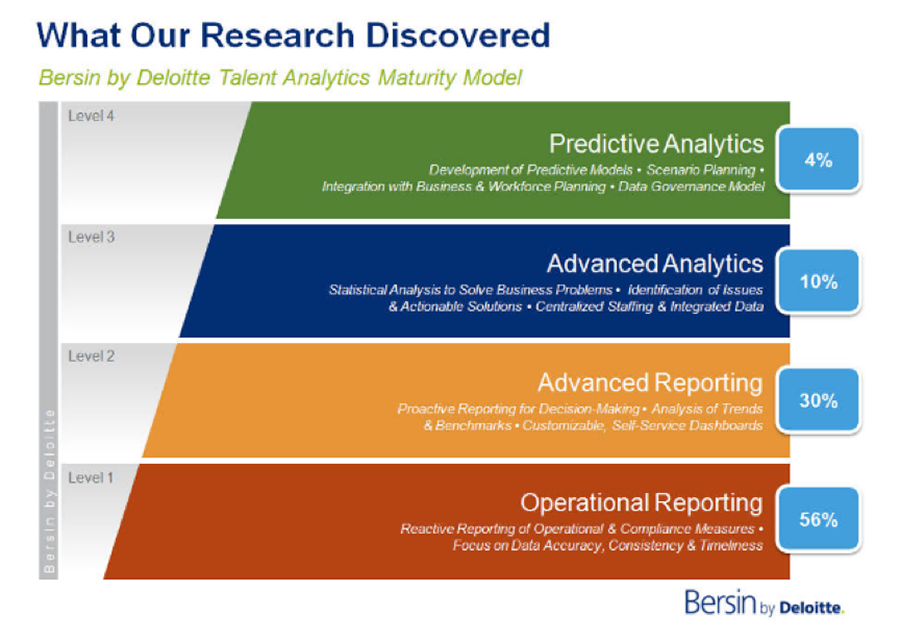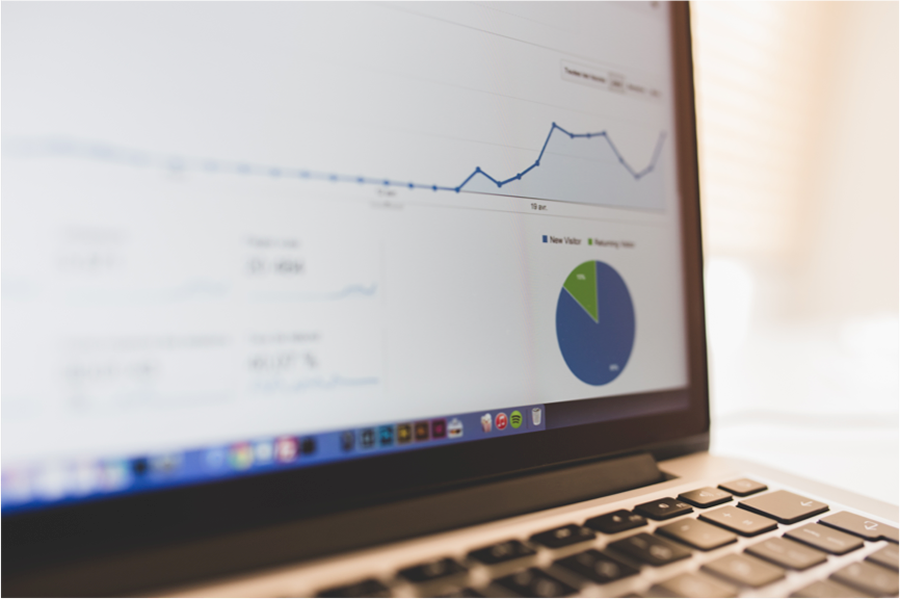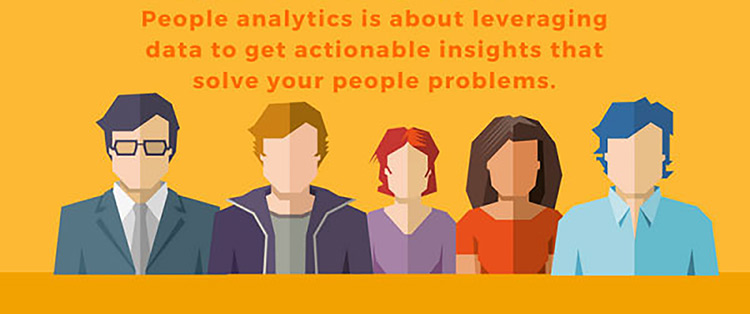People Analytics - Your Complete Guide
People analytics, also known as HR analytics, is one of HR’s hottest hot topics. You’re here, so you know that, but you’re probably not yet using analytics to its full potential. While industries like marketing and technology jumped on the analytics bandwagon years ago, HR has been much slower to embrace it.
That’s changing. HR leaders are learning how data can help identify and solve their people problems, positioning HR as the strategic business partner of the future.
Human Resources meets Machine Learning, and this section will teach you everything you need to know. We’ll give you a complete overview of the people and HR analytics landscape, including:
- A Roadmap to People Analytics Success
- Analytics Methodologies and How They Work
- Business Benefits of People Analytics
- Case studies: Who’s Doing People Analytics Well?
- Roadblocks to Your Analytics Success
- Your HR Analytics Problems; Solved
- What Does the HR Leader of the Future Look Like?
But first things first, let's start with an overview.
Read on to find out what people analytics actually is, why it’s different from what you’ve done before, and what its practical applications are.
What is People Analytics?
People analytics refers to the use of data to provide insight into people. It’s about analysing data about your workforce to get actionable insights that can help your business perform better.
You get quantitative, data-driven insight into the factors that impact employee retention, attrition, satisfaction and performance. You gain insight into talent acquisition, workforce composition and diversity. You can use people /HR analytics to anticipate critical business issues, so you can strategically mitigate them.
Why Should You Care?
Organisations that effectively leverage these analytics will have better control over their current and future workforce. As a result, those organisations will make decisions that are statistically more likely to be commercially impactful. As a result, they’ll be more competitive, more profitable and better placed to grow.
As such, HR leaders who grasp the principles and potential of people / HR analytics make themselves invaluable. These HR leaders are empowered to step into a strategic business partnership role – and such is the future of HR. Those who can’t or won’t adapt will render themselves dinosaurs.
How is People Analytics Different from What You Already Do?
You’d be forgiven for thinking that people / HR analytics is just a ‘hot ticket’ term for something HR has been doing for years. It’s not.
As the below Talent Analytics Maturity Model shows, different data-led HR activities can be quite clearly delineated. The blue boxes to the right indicate the percentage of analysed businesses that employ each activity, with the majority focussing on operational reporting.

Source: Bersin by Deloitte Talent Analytics Maturity Model
If you collect data primarily around metrics such as time-to-hire or headcount, you likely fall into this category. This operational reporting is reactive and is doing little to influence HR decision-making, let alone business decision-making.
Maybe you go a step further than collection, taking those metrics and looking at trends, setting benchmarks and supplying reports. In that case, you’re stepping into the advanced reporting zone. The data you collect stars to be meaningful – but you’re still not fully embracing analytics.
Step up again, and you’re using advanced analytics. You have a system to analyse the data you collect, using that insight to identify and solve business problems. HR and business start to come together, offering an understanding of how people issues contribute to broader business success.
Step it up one last time, and this is where people / HR analytics sits today, at the intersection of data and predictive learning. In layman’s terms, predictive analytics allows us to look at what we know to predict likely future scenarios.
At this level, HR analytics means leveraging data in a strategic, future-orientated way in order to make better decisions. A far cry from operational reporting, this gives you a much broader, more strategic level of insight that steers commercial thinking.
Making the Qualitative, Quantitative

Operational reporting aside, HR has traditionally been a very qualitative industry. Candidates are often selected based on thinly disguised ‘gut feel’. As a result, problems such as employee attrition are often identified late in the day and solved with Band-Aid solutions like performance bonuses or a salary raise.
With people / HR analytics, that stands to change.
Instead of guessing (however intelligent that guess is) who’ll be a high performer, you’ll have data to guide that decision. You’ll be able to test expensive initiatives before you waste money on them and redirect your efforts where they’re needed.
People /HR analytics gives you a fairer, more effective decision-making process to the ultimate gain of the business bottom line.
People Analytics in Action
Let’s look at some practical ways HR professionals can leverage analytics. We’ll go into more depth later in this section with a couple of case studies for you, so let’s focus on the broad brushstrokes view for now.
Recruitment
HR analytics can usefully inform who you need to hire when you need to hire them and where to find them. It can tell you what to offer and whether candidates will perform once hired. You can ascertain who amongst your competitors’ employees will likely be open to being headhunted.
Retention
Use data to understand why top performers leave your company and how to build a workplace they’ll want to stay with. Find out how to better motivate and engage different types of employees in your workforce to increase loyalty.
Performance
Analyse the factors that contribute to high performance, creating a blueprint for future hires. At the same time, analyse why your current employees are underperforming and what you can do to increase their contribution.
Training
People / HR analytics empowers you to identify and remedy skills gaps and measure the impact of your training program long-term. It’s not just about measuring training ROI, but about understanding which people need which training at which point and what that means for your business.
Workforce Planning
This is one of the most critical strategic uses of people / HR analytics. Predictive analysis can help give a birds-eye view of the organisation, mapping potential future hurdles and allowing you to plan your people strategy to mitigate them.
Conclusion
The above should leave you in little doubt that it’s time to get on board with people / HR analytics and a little clearer about how you’ll do that. The benefits are clear, with a data-led approach giving us a depth of insight that HR has never previously had.
Soon, HR decisions will be as much machine-led as human-led. The HR department will be less reactive and more proactive, and HR professionals will take a less operational and much more strategic role as senior business leaders. That’s the potential of people / HR analytics, and savvy professionals are embracing the trend now.






